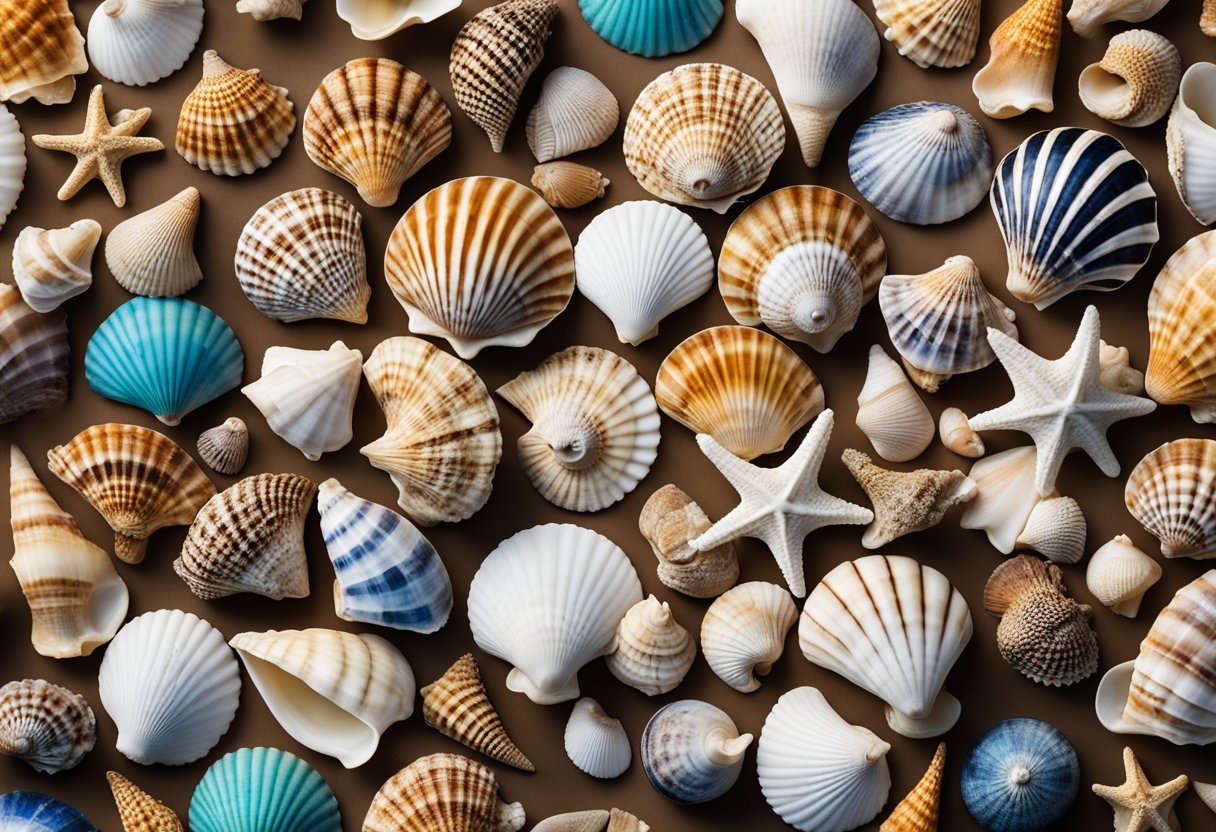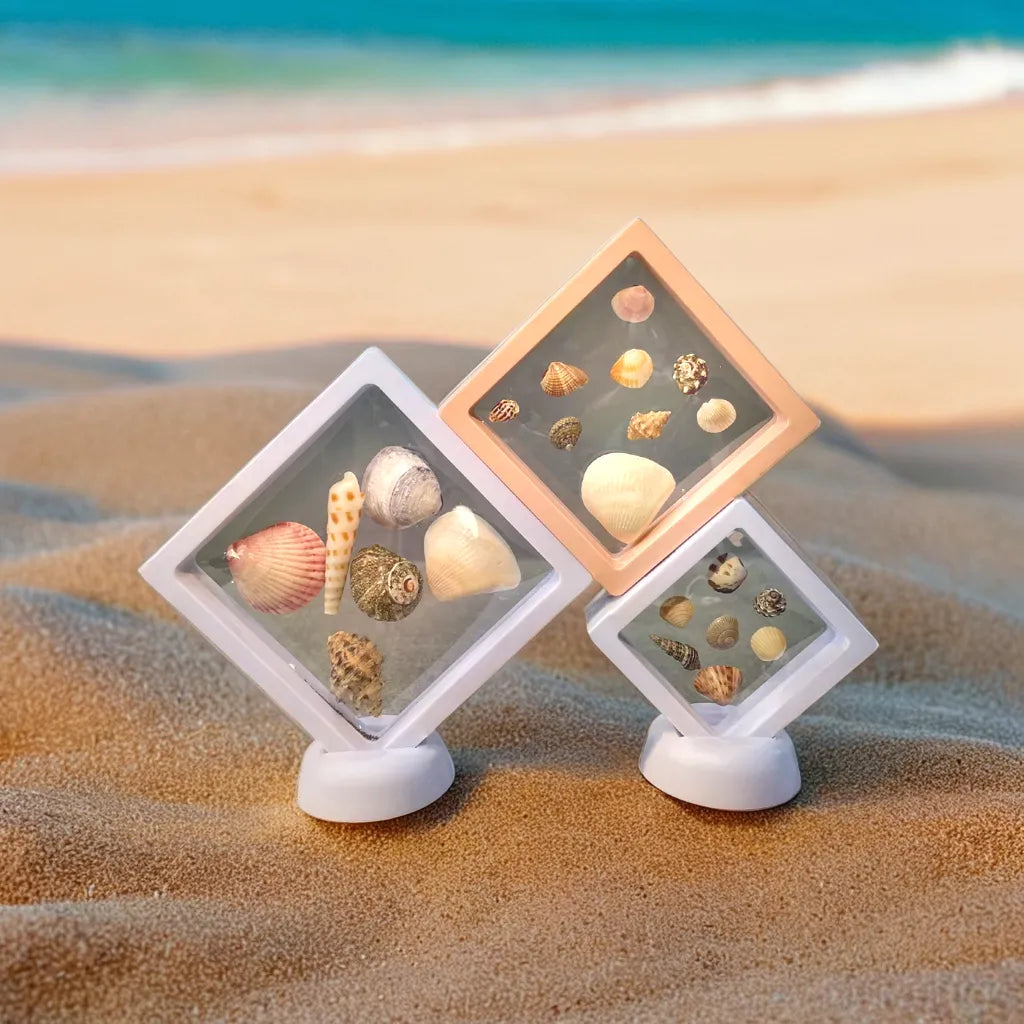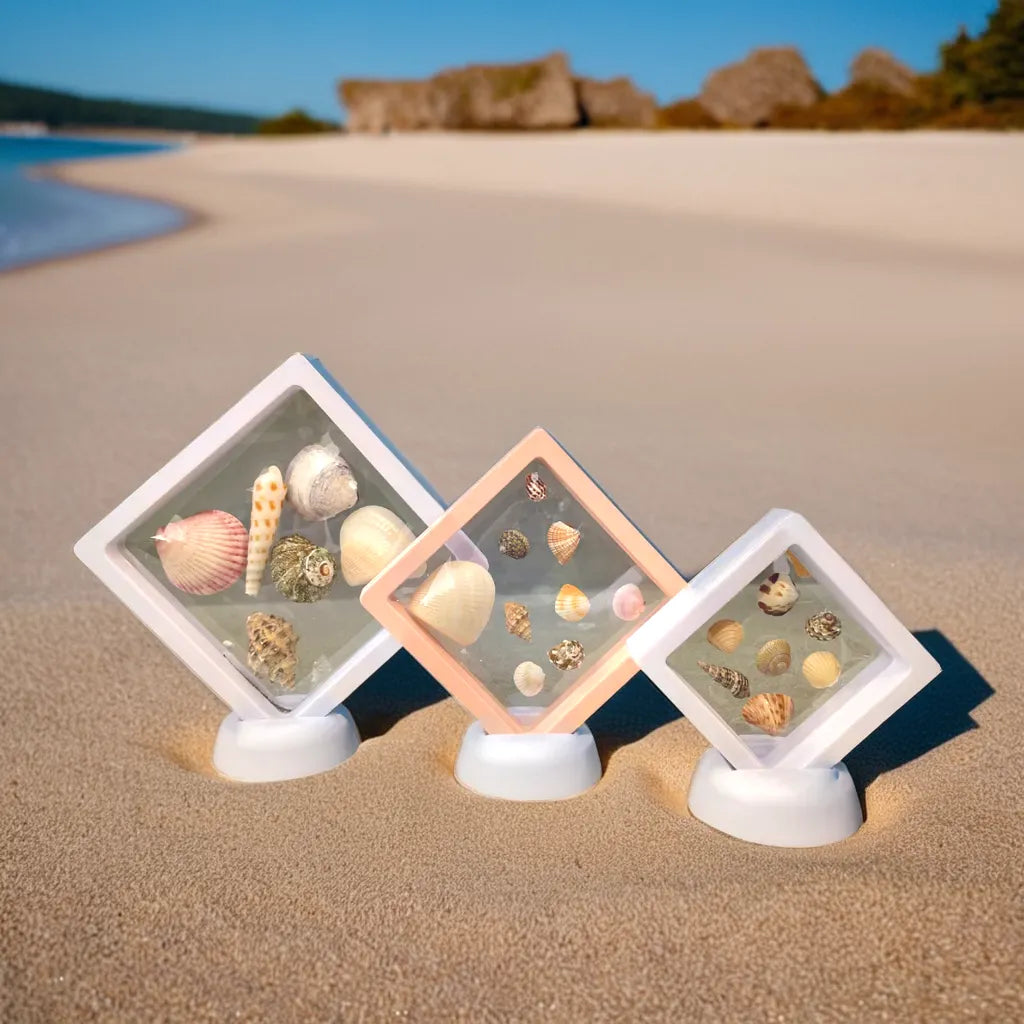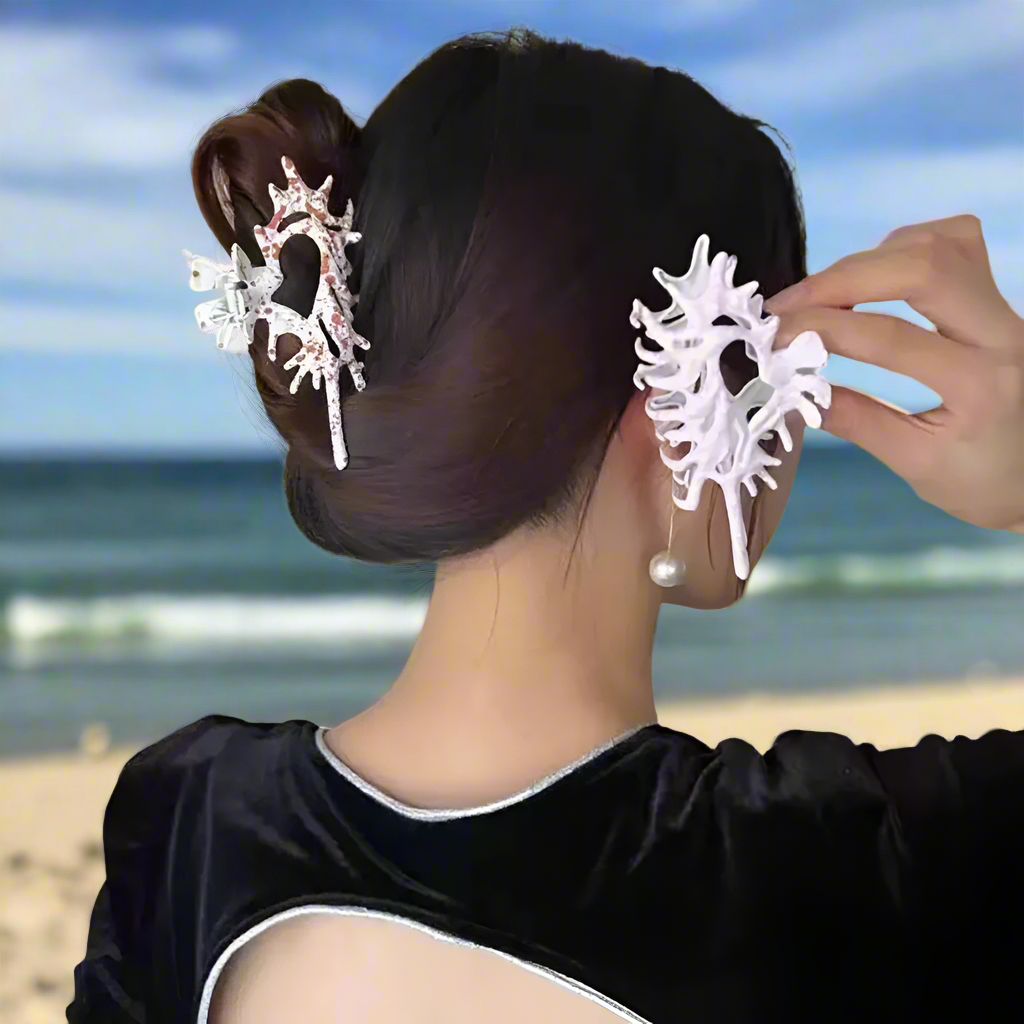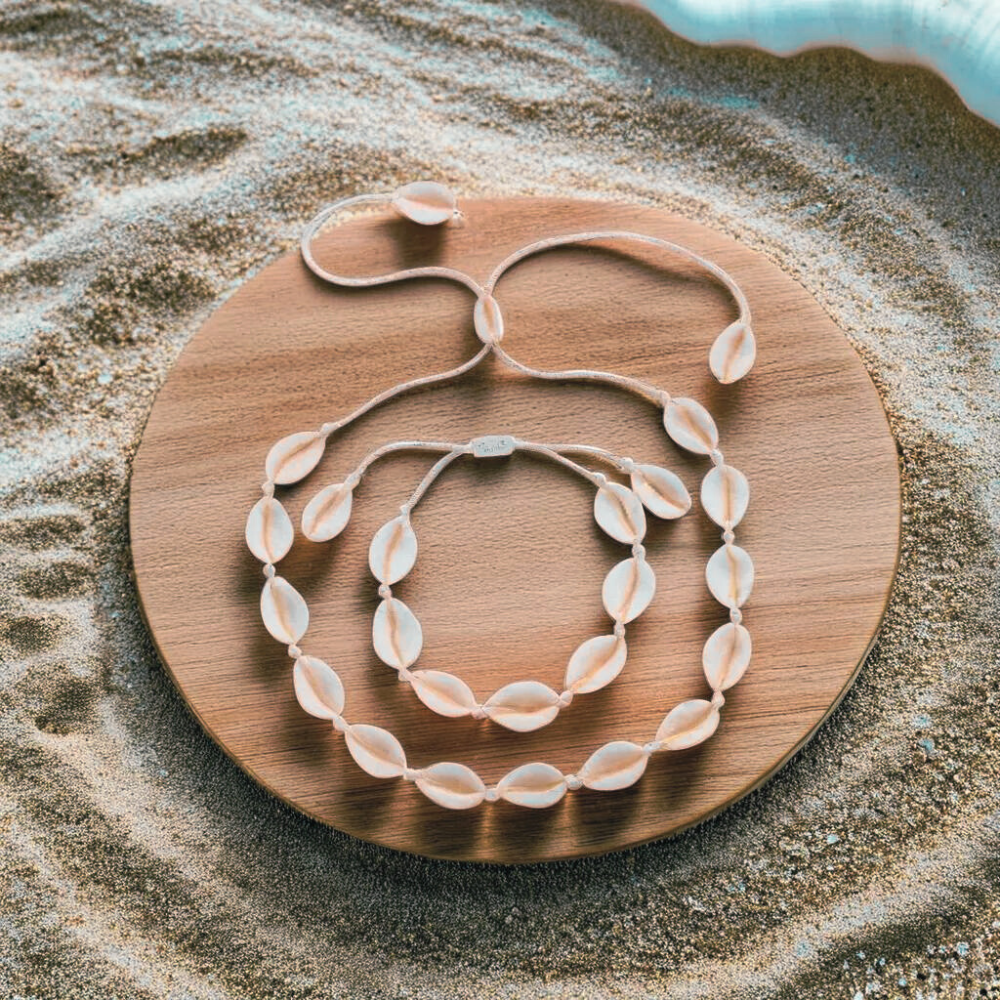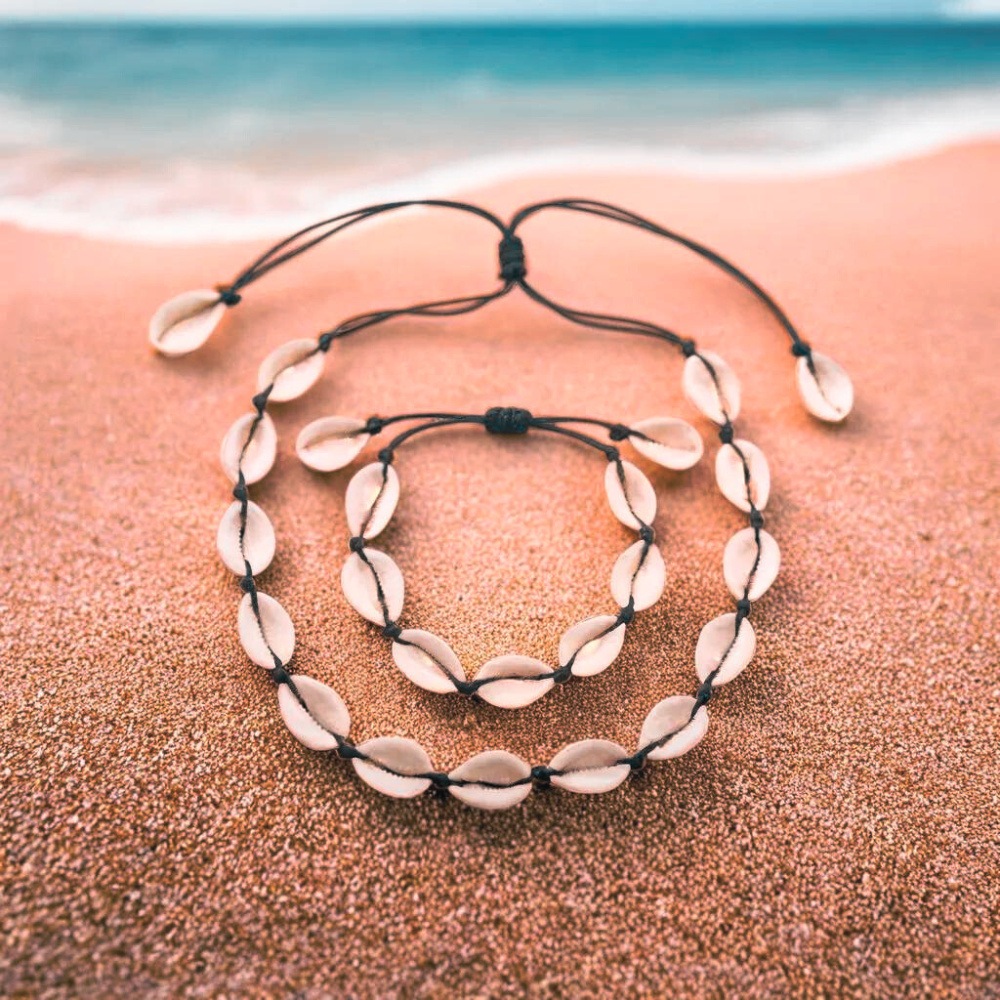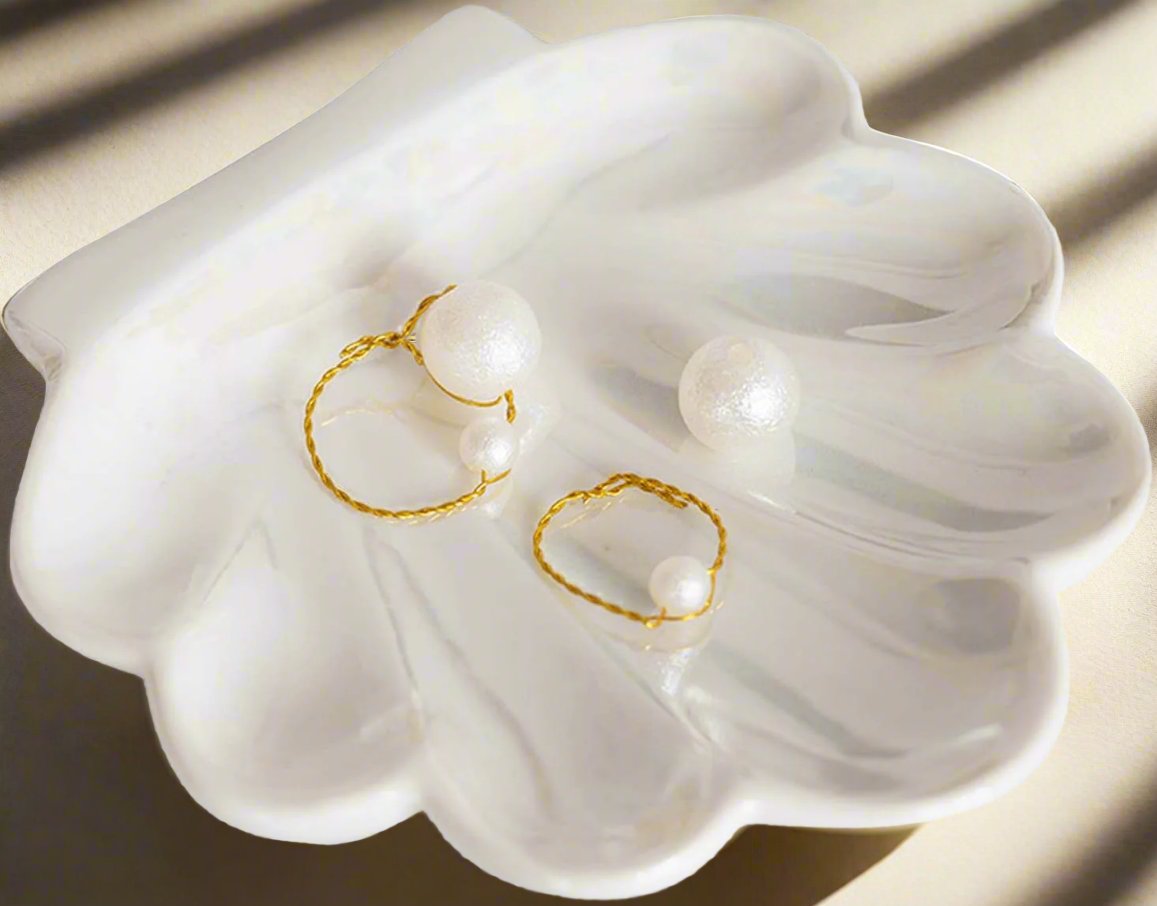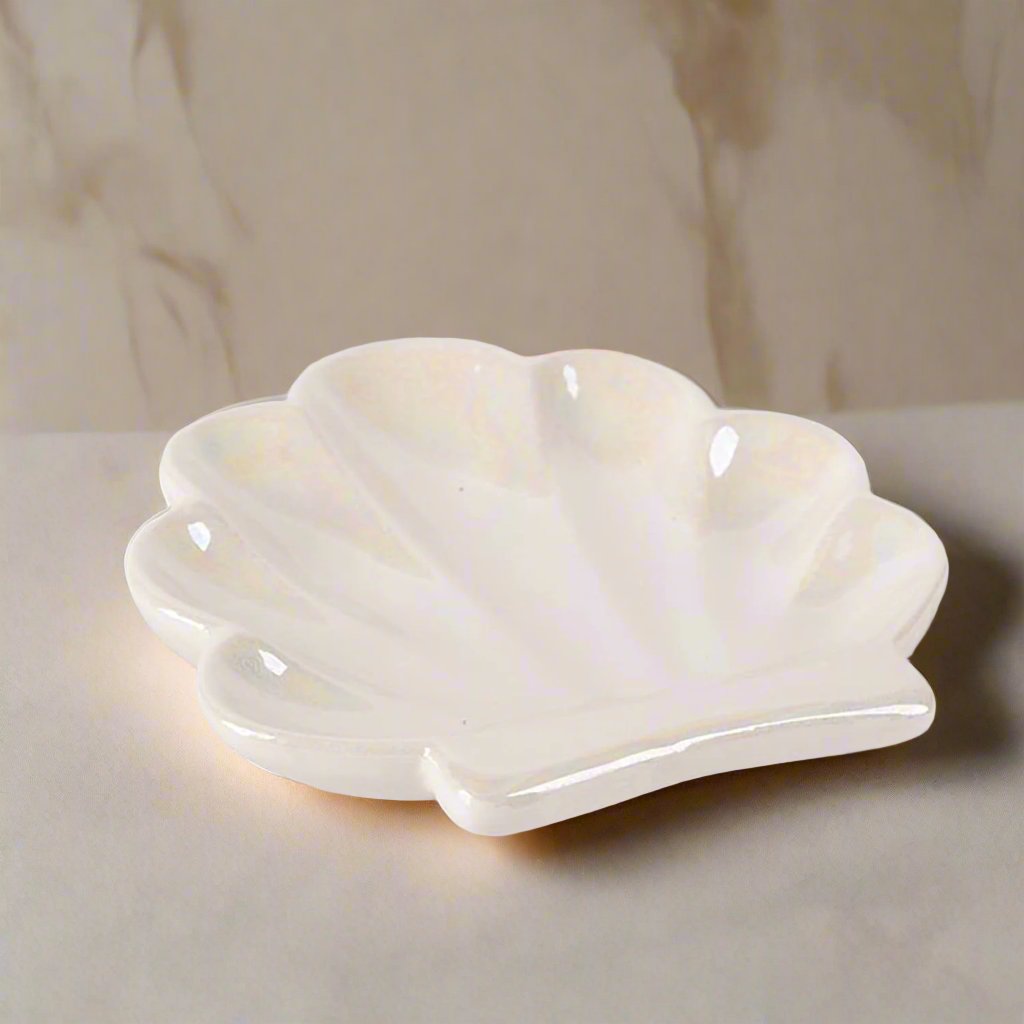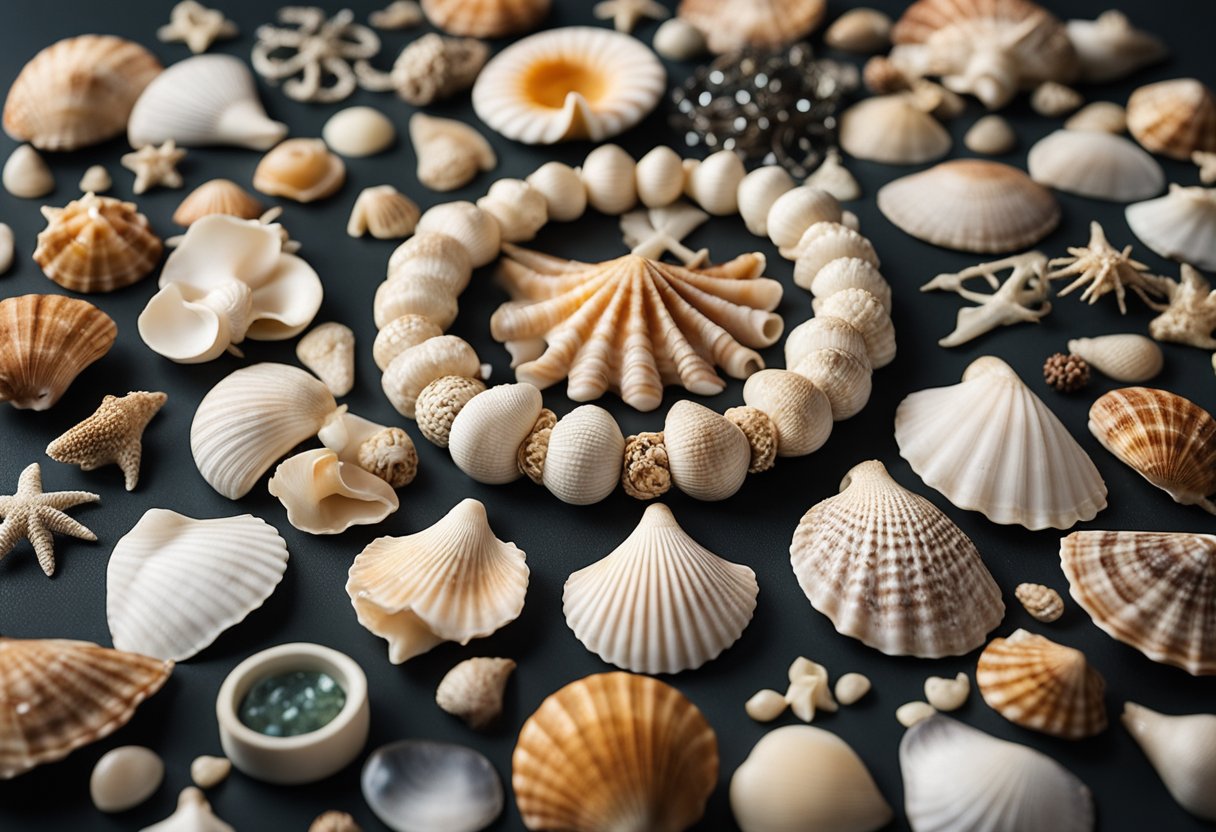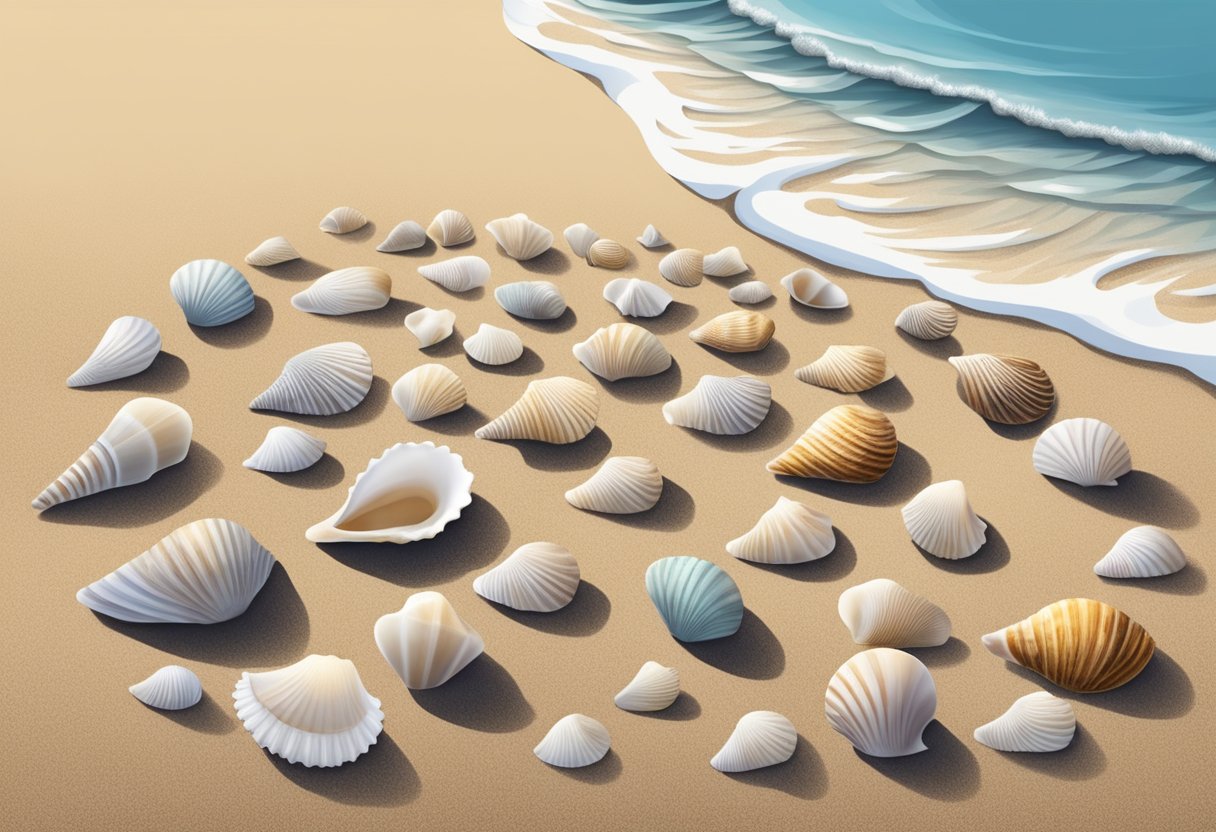Shelling enthusiasts often describe the thrill of discovering unique seashells on the shores of Marco Island and the Ten Thousand Islands. This region offers a rich variety of shells, with elusive treasures like the Junonia being particularly prized by collectors. The quest for these natural beauties becomes an adventurous activity that both locals and tourists eagerly pursue.
 Exploring the sandy stretches and tidal pools reveals not just shells, but stories etched by the ocean. Shelling tours on Marco Island, led by knowledgeable guides, deepen the experience by pointing out the distinct features of different shells and sharing tips on the best times and places to find them.
Whether embarking on a boat tour to Kice Island or simply strolling along the shore at low tide, shelling provides a deep connection to nature's artistry. Enthusiasts are drawn to the challenge and the beauty, making each shelling trip a new chapter in their continuing adventure.
Exploring the sandy stretches and tidal pools reveals not just shells, but stories etched by the ocean. Shelling tours on Marco Island, led by knowledgeable guides, deepen the experience by pointing out the distinct features of different shells and sharing tips on the best times and places to find them.
Whether embarking on a boat tour to Kice Island or simply strolling along the shore at low tide, shelling provides a deep connection to nature's artistry. Enthusiasts are drawn to the challenge and the beauty, making each shelling trip a new chapter in their continuing adventure.
 Seashells have been cherished for many reasons, from their historical uses to their roles in art, mythology, and the economy. They symbolize spiritual meanings and have influenced human activities and beliefs over centuries.
Seashells have been cherished for many reasons, from their historical uses to their roles in art, mythology, and the economy. They symbolize spiritual meanings and have influenced human activities and beliefs over centuries.
 Shelling enthusiasts can find a vast array of seashells, each tied to its unique coastal ecosystem. Some shells are common, while others are rare treasures that reveal the rich diversity and complex habitats of marine life.
Shelling enthusiasts can find a vast array of seashells, each tied to its unique coastal ecosystem. Some shells are common, while others are rare treasures that reveal the rich diversity and complex habitats of marine life.
 Seashells, primarily composed of calcium carbonate, are produced by marine organisms for protection and structure. Their formation, growth, and significance in marine biology offer fascinating insights for researchers and enthusiasts.
Seashells, primarily composed of calcium carbonate, are produced by marine organisms for protection and structure. Their formation, growth, and significance in marine biology offer fascinating insights for researchers and enthusiasts.
 Seashell collecting isn't just a hobby; it has various practical uses that can enrich our lives in different ways. From crafts and decorations to health benefits and commercial opportunities, seashells have more to offer than just their beauty.
Seashell collecting isn't just a hobby; it has various practical uses that can enrich our lives in different ways. From crafts and decorations to health benefits and commercial opportunities, seashells have more to offer than just their beauty.
 Exploring the sandy stretches and tidal pools reveals not just shells, but stories etched by the ocean. Shelling tours on Marco Island, led by knowledgeable guides, deepen the experience by pointing out the distinct features of different shells and sharing tips on the best times and places to find them.
Whether embarking on a boat tour to Kice Island or simply strolling along the shore at low tide, shelling provides a deep connection to nature's artistry. Enthusiasts are drawn to the challenge and the beauty, making each shelling trip a new chapter in their continuing adventure.
Exploring the sandy stretches and tidal pools reveals not just shells, but stories etched by the ocean. Shelling tours on Marco Island, led by knowledgeable guides, deepen the experience by pointing out the distinct features of different shells and sharing tips on the best times and places to find them.
Whether embarking on a boat tour to Kice Island or simply strolling along the shore at low tide, shelling provides a deep connection to nature's artistry. Enthusiasts are drawn to the challenge and the beauty, making each shelling trip a new chapter in their continuing adventure.
The Art of Shelling
Shelling is a popular activity among beachgoers who seek the beautiful and unique treasures that the ocean offers. Understanding seashells, following the best practices for shelling, and learning identification techniques are crucial for an enjoyable and responsible shelling experience.Understanding Seashells
Seashells are the hard, protective outer layer created by marine organisms called mollusks. These shells are discarded as the animals grow, leaving them to wash ashore. Types of seashells include gastropods (like conchs and whelks) and bivalves (like clams and oysters). Knowing the difference helps shellers identify their finds and appreciate the diversity of sea life. Seashells also come in different patterns, colors, and sizes. The environment, such as the type of seabed and water conditions, can influence their appearance. Paying attention to these details adds to the enjoyment and helps in precise identification.Best Practices for Shelling
Ethical shelling involves respecting the environment and marine life. It's vital to only collect empty shells and leave live creatures undisturbed. Over-collecting from one area can harm local ecosystems. Following the “Leave No Trace” principles ensures that beaches remain beautiful and healthy for future generations. Equip yourself with the right tools: a mesh bag, a small shovel, and perhaps a field guidebook. Timing your shelling trips can also make a difference. The best time is usually after a high tide or storms when the waves deposit fresh shells on the shore.Seashell Identification Techniques
Accurate shell identification enhances the shelling experience. Start with a good field guide that includes images and descriptions. Look for key features like the shell’s shape, color patterns, and texture. Some shells have distinct ridges, spikes, or openings that set them apart from others. Utilizing online resources and shelling communities can also assist in identifying hard-to-classify finds. Sharing images and details on forums or social media groups allows for expert feedback. Practice and repetition will make identification easier over time, turning novices into seasoned shell enthusiasts. By following these practices and techniques, shellers can make the most of their seaside adventures, ensuring a rewarding and responsible experience.Cultural Significance of Seashells
 Seashells have been cherished for many reasons, from their historical uses to their roles in art, mythology, and the economy. They symbolize spiritual meanings and have influenced human activities and beliefs over centuries.
Seashells have been cherished for many reasons, from their historical uses to their roles in art, mythology, and the economy. They symbolize spiritual meanings and have influenced human activities and beliefs over centuries.
Historical Use of Seashells
Seashells have been used in various cultures for practical and decorative purposes. In ancient times, they served as tools, utensils, and even currencies. For instance, cowrie shells were used as money in Africa and Asia due to their durability and portability. People made jewelry and ornaments from shells, wearing them as symbols of status and wealth. Archaeologists have found shell artifacts in burial sites, indicating their importance in ancient societies. Shells also played significant roles in rituals and ceremonies, embodying deep cultural meanings.Seashells in Art and Mythology
Seashells appear in art and mythology across different cultures. In Christianity, they symbolize baptism and rebirth, often depicted in religious paintings and sculptures. The conch shell is revered in Hinduism and Buddhism, representing sacred sounds and divinity. Artists have admired seashells for their beauty, incorporating their shapes and patterns into various art forms. From paintings to sculptures, seashell appearances reflect nature's intricate designs. Myths and legends often feature seashells as symbols of love, fertility, and the ocean's mysteries.Economic Role of Seashells
Seashells have also been integral to economies, especially in coastal regions. They were used as currency, facilitating trade among ancient communities. The collection and sale of seashells contribute to contemporary tourism, drawing enthusiasts to beaches worldwide. Seashells are a source of income for artisans who craft jewelry and decorative items. The trade of these items supports local economies, particularly in areas where traditional crafts are valued. They also play a part in the scientific study and environmental monitoring, highlighting their continued economic relevance.Seashell Varieties and Ecosystems
 Shelling enthusiasts can find a vast array of seashells, each tied to its unique coastal ecosystem. Some shells are common, while others are rare treasures that reveal the rich diversity and complex habitats of marine life.
Shelling enthusiasts can find a vast array of seashells, each tied to its unique coastal ecosystem. Some shells are common, while others are rare treasures that reveal the rich diversity and complex habitats of marine life.
Coastal Ecosystems and Shell Diversity
Coastal ecosystems are home to an impressive variety of seashells. Beaches, tidal pools, and mangroves are all unique environments where different kinds of shells can be found. Beaches often feature common shells like scallops, clams, and augers. Tidal pools, with their varying water levels, host shells like turban snails and limpets. Mangroves are homes to specialized shells like mangrove periwinkles. Each ecosystem supports its own distinct group of shells, offering a window into the health and diversity of marine life. Collectors exploring these areas can discover new species and appreciate the ecological roles each shell plays.Rare and Unique Seashells
Some seashells are rare and particularly sought after by collectors. Rare shells like the Junonia become prized finds due to their scarcity and beauty. The Conch shell, known for its size and intricate patterns, stands out as another unique find. Sunrise tellin shells, with their vibrant colors, can be hard to come by, making them special discoveries. These rare shells often require exploring less-visited or more challenging locations. Nocturnal shelling can sometimes yield unique results as certain shells are more active at night, hiding during the day from predators.Conservation of Seashell Habitats
Preserving seashell habitats is crucial for maintaining marine biodiversity. Overcollecting shells can disrupt local ecosystems and harm species that rely on these habitats. Ethical shelling practices are essential. Seashell enthusiasts should avoid taking live shells and be mindful of local regulations. Coastal development poses a significant threat, as it can destroy natural habitats. Supporting organizations dedicated to conserving marine environments helps protect these crucial areas. By practicing sustainable shelling and advocating for conservation, enthusiasts can help ensure seashell diversity for future generations.Scientific Aspects of Seashells
 Seashells, primarily composed of calcium carbonate, are produced by marine organisms for protection and structure. Their formation, growth, and significance in marine biology offer fascinating insights for researchers and enthusiasts.
Seashells, primarily composed of calcium carbonate, are produced by marine organisms for protection and structure. Their formation, growth, and significance in marine biology offer fascinating insights for researchers and enthusiasts.
Seashell Formation and Growth
Seashells are built by marine mollusks, such as clams, snails, and oysters. These organisms secrete calcium carbonate, combined with proteins and chitin. The layers accumulate over time, resulting in intricate and unique shell patterns. Growth rings on seashells are similar to tree rings. They indicate the age of the shell. Unlike crustaceans, which shed their shells, mollusks expand theirs continuously, potentially over many years. Factors like water temperature, salinity, and nutrient availability can influence the size and shape of seashells. These environmental conditions leave marks on the shells, telling a story of where and how they developed.Marine Biology Insights
Seashells offer valuable information about marine life and ecosystems. Each shell type is associated with specific behaviors and habitats of the creature that produced it. For example, the presence of certain seashells can indicate the health of an ecosystem. Shells of mollusks like clams and oysters are crucial in marine environments. They help filter water, provide habitat for other organisms, and contribute to the structural complexity of the seabed. Even after the mollusk's death, seashells continue to play a role in ecosystems. They offer homes for hermit crabs and other small marine creatures. This ongoing interaction highlights their importance in ocean life cycles and marine biodiversity.Research and Education
Scientists use seashells to study environmental changes and past marine conditions. The chemical composition of the shells can reveal historical data about ocean temperature, salinity, and even pollution levels over time. Educational programs often include seashells to teach students about marine biology. Hands-on activities, like collecting and analyzing shells, stimulate curiosity and understanding of marine ecosystems. Research on seashells helps in conservation efforts. By studying shell patterns and growth, scientists can monitor the health of marine species and predict the impacts of environmental changes, aiding in the protection of fragile marine habitats.Practical Shelling Applications
 Seashell collecting isn't just a hobby; it has various practical uses that can enrich our lives in different ways. From crafts and decorations to health benefits and commercial opportunities, seashells have more to offer than just their beauty.
Seashell collecting isn't just a hobby; it has various practical uses that can enrich our lives in different ways. From crafts and decorations to health benefits and commercial opportunities, seashells have more to offer than just their beauty.

